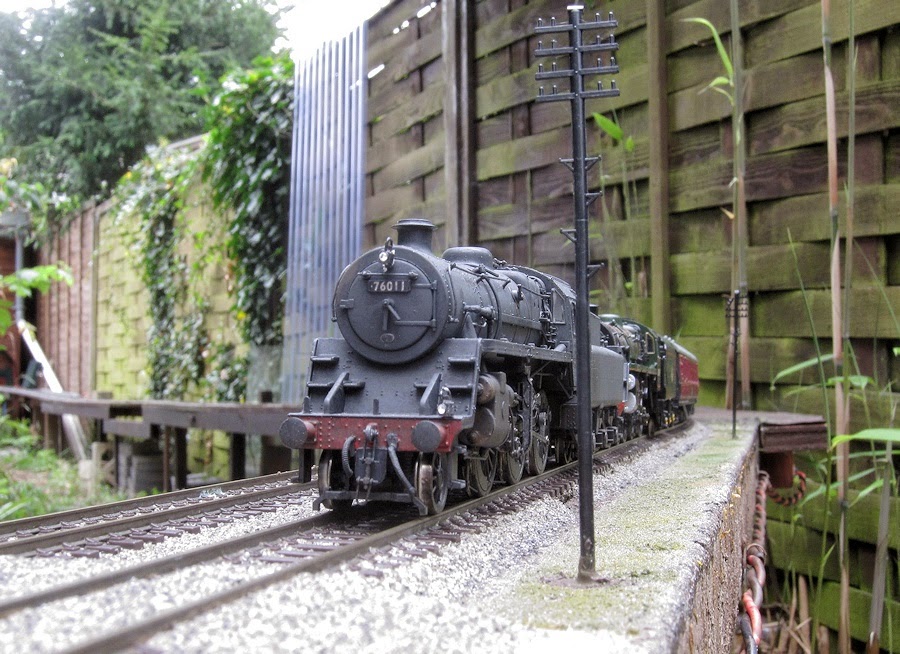Today I had enough of the track modules for the quarry sidings complete and ready for a live operational test. There are two removable modules; the "black plank" and the "quarry turnouts". The "black plank" is effectively a bridge allowing space below it for the tree roots to grow. It contains the main line, single track at this point, the shunter refuge siding, and a turnout switchable between the main line and the quarry sidings. The "quarry turnouts" module contains two turnouts toe-to-toe, fed from the quarry turnout on the "black plank", and feeding back to the refuge siding and forward to the exchange siding or the quarry floor.
The turnouts are switched using Peco point motors, which are hidden under appropriate-looking building. The building on the "black plank" is a ground-frame cabin, based broadly on the one at Midford North sidings near Bath. It was purpose-built from "plasticard". The other building covers two motors, and I found something suitable in Hornby's range, a weighbridge office I think it was described as. I decided that in real life, these turnouts would have been operated by the train crew using a special token to unlock the ground frame. In model form, therefore, I use the same principle; I have a ground frame in a box, which is plugged in to the track modules via a length of cable, and used to operate the points. (If you are an expert in these matters on real railways, please let me know whether the terminology in my description is correct.)
 |
| The quarry has been disused for some time. Nature is taking over again. |
 |
| The shunter descends the final short 1 n 5 gradient to the quarry floor. |
 |
| The way it was; the quarry in October 2011, with very little greenery. A shunter nears the top of the 1 in 5 gradient from the quarry floor. |











